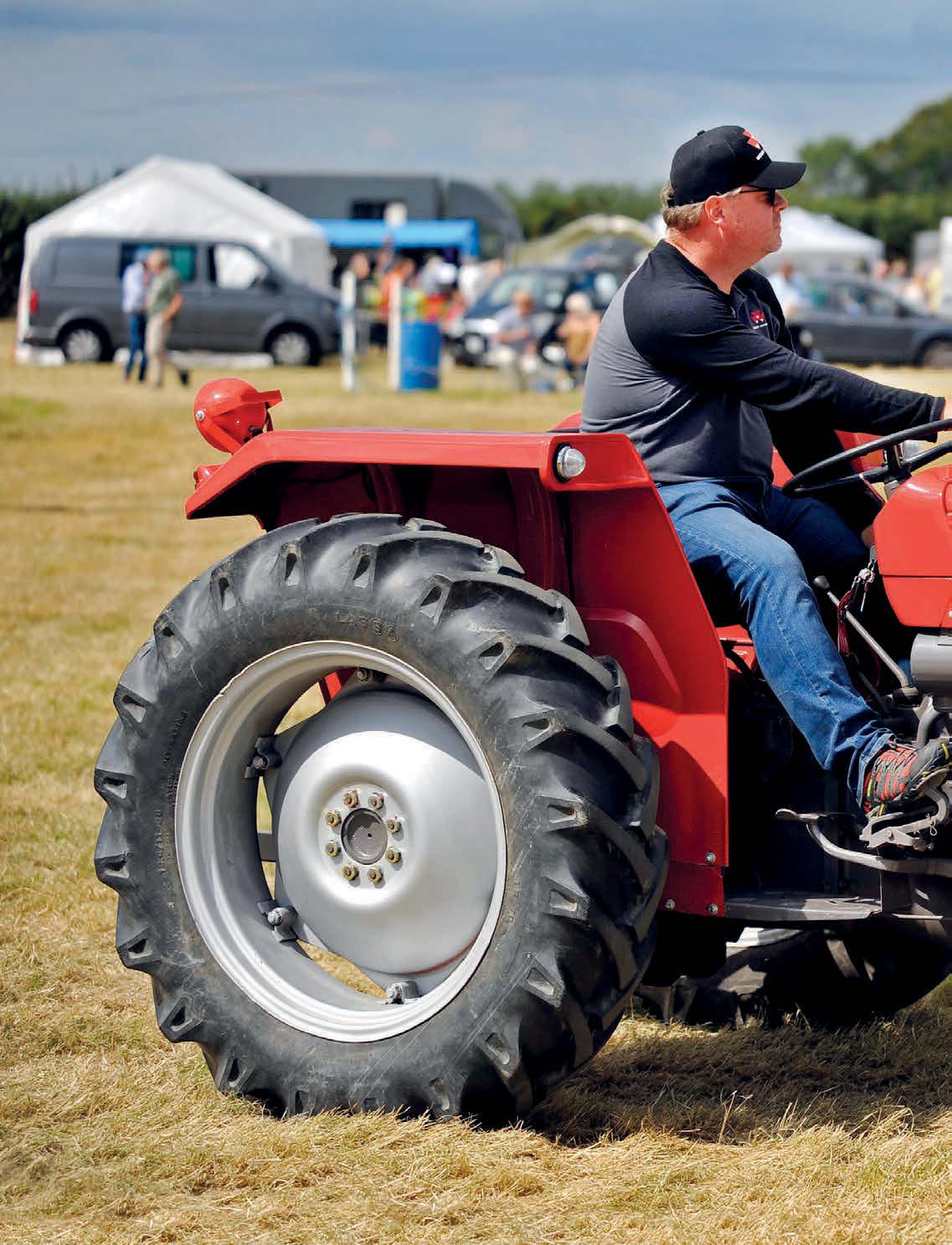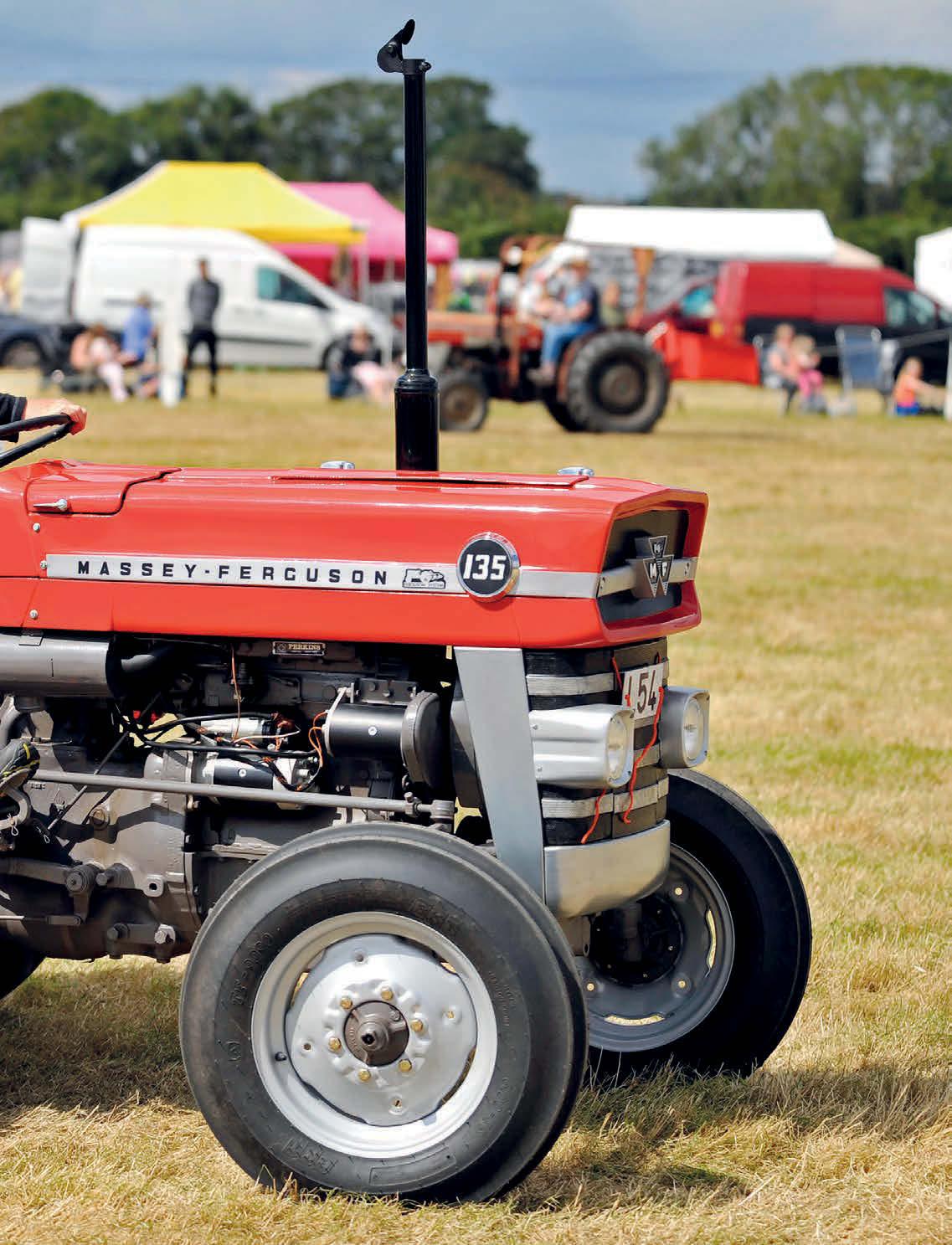
10 minute read
ALL GOOD THINGS
RESTORATION
All good things

Alex MacDonald was born and bred in East Lothian and worked on a farm for 50 years. But, since he retired he’s been concentrating on his other passion – collecting and restoring old tractors.
“I was born and raised at Abbey Mains, just up the road in Haddington, before eventually moving to Lawhead on the Tyninghame estate, which is the former seat of the Earl of Haddington,” he explained. “My father was what we call in Scotland the local ‘grieve’, or farm manager. Back in those days, we farmed a bit of everything, including cereal, sugar beet, turnips and cattle feed.”


Massey Ferguson enthusiast Alex MacDonald was having trouble tracking down the right MF135 until his three sons came to the rescue, as Bob Weir explains
East Lothian’s economy has been based on farming for many years, and a large percentage of the land is under the plough. The county has a mild climate compared to the rest of Scotland, and some of the lowest rainfall in the UK. Although there’s some livestock farming, the focus is primarily on arable crops. First job
Alex left school when he was 15, and went to work on a farm. “I went straight onto a holding at Lawhead, loading sugar beet with the help of a Massey Ferguson 35 and root bucket,” he recalls. “Back in the early 1960s there was a railway station at East Linton, on the main Edinburgh to London line, and I would use the tractor to take the beet to be loaded


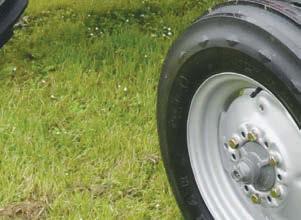
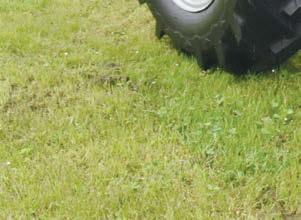
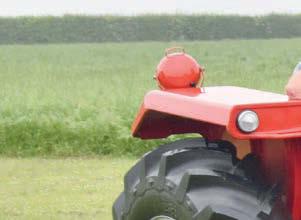
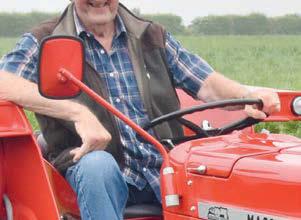
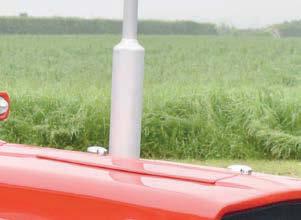
Alex MacDonald with his superb Massey Ferguson 135.
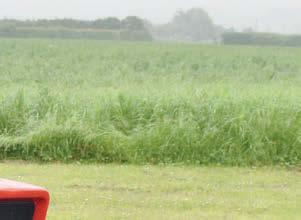
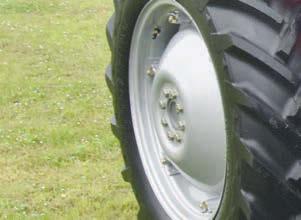
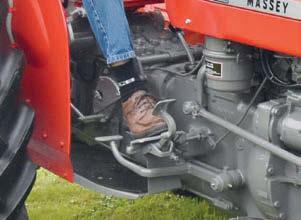
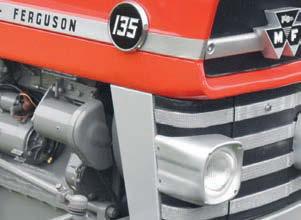
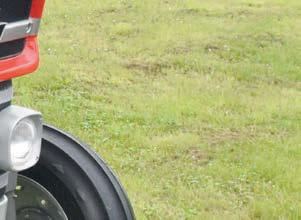
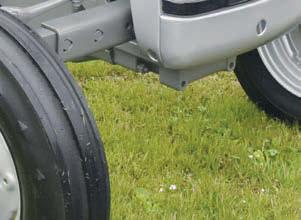
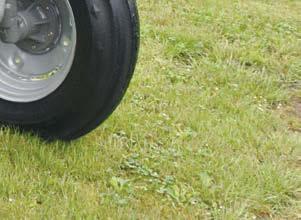
onto a train. I then worked my way up through the system learning how to plough with a wee two-furrow Ferguson, and all the other 101 jobs that need doing on a large farm.”
Alex recalls that farming was a lot different back in those days, as most of the work was labour-intensive and had to be done by hand. “We had some farm machinery, but it was quite basic by today’s standards,” he explained.
“The tractors were a lot less powerful and most of them didn’t have cabs, so you had to wear a hat to keep the seagulls at bay! The lights on tractors weren’t very powerful, so you had to be careful if you wanted to work in the dark. The combines and trailer loads were also very modest by today’s standards. All things considered, you had to work longer and harder to get the job done.”
Despite the long days, Alex still found time for the occasional hobby. By the early 1980s, he was a member of a tug-of-war team, which was rapidly making a name for itself. He said: “I remember we were called the ‘Goblin Ha’, and the team was based just up the road, in Gifford. Most of us were farmers, and we travelled around in a minibus, going as far north as Tayside, competing in the Highland Games. One year we were even champions. It was also how I met my wife, Kate, so some good certainly came out of it!”
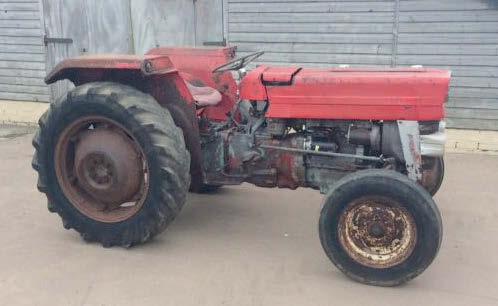
Not the worst example in the world, but certainly not the best! This was the starting point for Alex’s project. (Pic: Alex MacDonald)
The tractor’s Perkins AD3.152 was a direct-injection engine producing plenty of power and torque, as well as an infectious soundtrack!
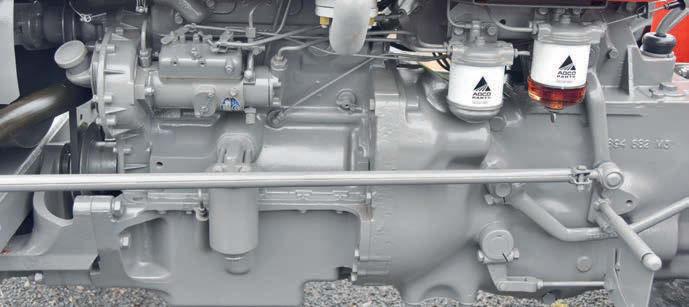
Learning curve
On January 16th, 1966, Alex moved from Lawhead to the farm estate at Kingston Steading, near North Berwick, where he would remain for the next 45 years. “Looking back, this was the best move I ever made,” he says. “My father had been appointed grieve, and I went along with him. The previous manager had worked there for 60 years, in the days when they still relied on horses. As I recall, there were fi ve other staff to handle the work.
“We were farming a mixture of cereal and livestock, and were the Alex’s tractor has a comprehensive instrument layout.
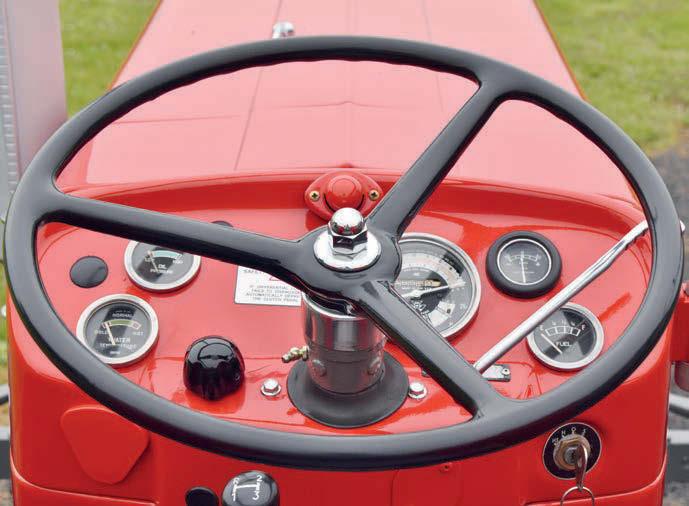
The MF135 managed to include all of Harry Ferguson’s original ideas from the TE-20, while incorporating several new features and improvements.
only place for miles around to feed our herd of Friesian cattle on ‘barley beef’. This was an experimental new system based on high-protein concentrates. It seemed to work well enough, although we used to get a few complaints when the time came to empty the slurry out into the fields!”
The farm also kept a herd of French Percheron horses. This ancient breed of draft horse originated in the Perche valley in Northern France, and is believed to have been a popular favourite with mediaeval knights, as the horses were capable of taking the extra weight of their armour. By this time Alex had also replaced his father as Kingston grieve, and admits it was a steep learning curve.
He said: “You didn’t have computers and mobile phones back in those days, so you had to keep your wits about you. Some of the older staff had also retired, so there were only three of us left to do the work. By this time, we’d got rid of the cattle, as the price of barley was on the up. As I recall, 1985 was a particularly bad year, because of the bad weather. We had a lot of problems getting the crop in and, to complicate matters, the price of fuel went through the roof.”
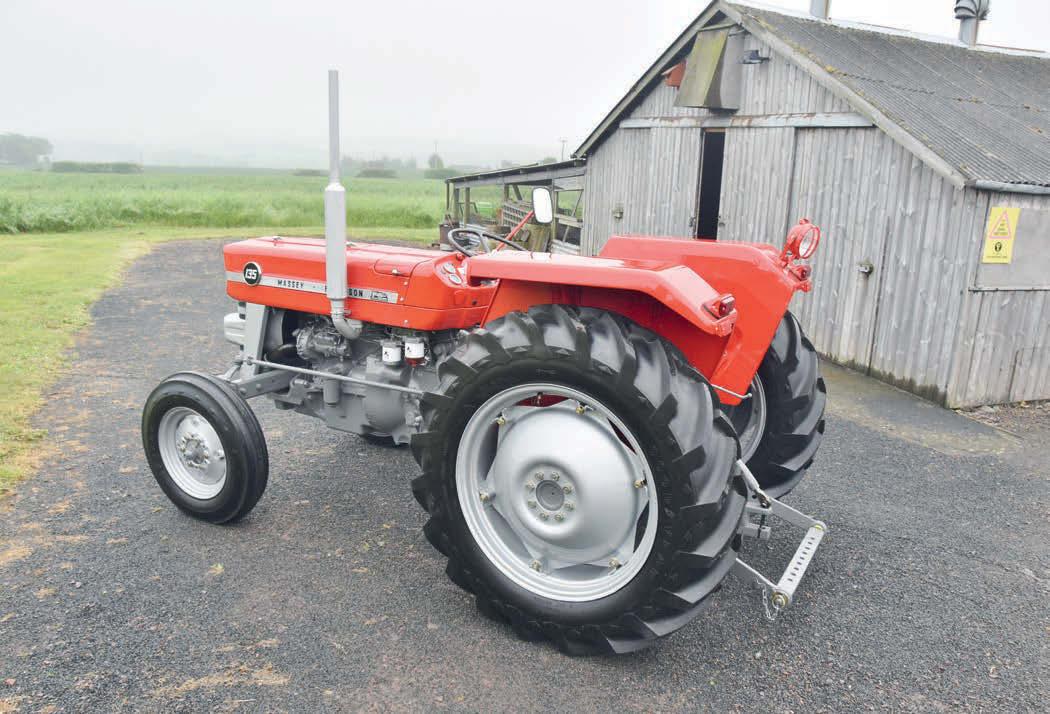
Better times
Fortunately, better times were on the way. The introduction of bigger and more powerful tractors meant that the farm was able to benefit from economies of scale. “Back in the 1960s, even with the help of tractors, the jobs were more labour intensive,” he recalls. “You needed several passes to plant the crops, and two or three men had to walk out in front. The arrival of the latest machines meant we could work the ground and sow it in one pass, which saved a lot of time and money.
“There was also the introduction of bigger, five-furrow ploughs that also cut down on the work. The Ford 5000 in particular was a very good tractor, and the same went for the later 6600. To put this into perspective, my son Craig is also a farm manager, and with the
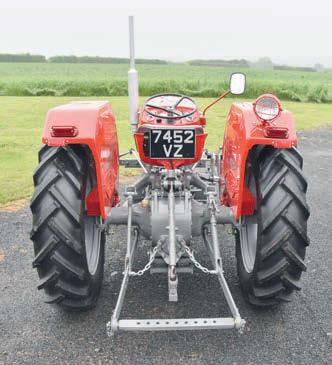
The 135’s Ferguson System three-point linkage offered draft, response and position control as standard, with a 3,100lb static lift force.
improvements in technology he can do all the work himself.”
By the late 1980s, Alex was taking part in local ploughing matches in his spare time. He was reserve champion for East Lothian using a Ford 7600. In more recent years he has graduated to vintage matches, driving a 1962 Fordson Dexta. Having progressed all the way up from ‘tractor man’ to farm grieve, he finally decided to call it a day in March 2011.
“I really enjoyed my work over the years,” Alex summed up. “Having a good boss is very important, and I couldn’t have asked for more from the Stodart family. The machinery they provided was first class, and I have no complaints.”
Hard to find
Alex has been fortunate to own several classic tractors over the years but, for some reason, could never get his hands on a suitable Massey Ferguson 135. He said: “It’s peculiar when you think about it, as there are still quite a few MF135s knocking about. But, for one reason or another, it just never happened. Collectors were either reluctant to move them on, or other examples I found were still working on a parttime basis. The MF135 was always a handy wee tractor, and more than capable of doing a good job.”
Fortunately, his three sons, Craig, Fraser and Murray, had other ideas, and Alex was presented with an MF135 as a surprise, 70th birthday present in May, 2016. “I was completely taken aback,” he recalls. “It coincided with Craig’s wedding, so we had all the family around. We were just sitting down to dinner when Murray turned up with the tractor on the back of a lowloader. My wife Kate has had to put up with several of my restorations over the years, but even she was happy when she recognised the tractor was an MF135. She knew I had been looking for one for some time.” The tractor also came with an interesting history, as it had spent some time in Northern Ireland. “It was bought new in 1970, by Tyrone local council in Northern Ireland,” said Alex. “When it was stood down in 1974, the Massey moved over the Irish Sea to Scotland. The new owner was Ernst Todd of Awhirk Farm in Stranraer, and he used the machine as a scraper tractor. When my sons discovered the Massey, it was working at a local sawmill in Swinton, where it was being used to drive a log-splitter.”
The right model
Alex was also pleased that the Massey was the deluxe version of the tractor. “You get some nice little extras with that model, like a tachometer/hour meter, ammeter and fuel gauge,” he explained. “There’s also the optional diff’ lock, dual-clutch live hydraulics and PTO, as well as power steering.”
No sooner had he been given the tractor, Alex got straight down to work, and the Massey was treated to a full, nut-and-bolt restoration. “As a general rule, I just roll up my sleeves and get stuck in,” he explained. “The tractor was leaking a lot of oil so I stripped everything down to the bare bones, and renewed all the seals. I also prepared the metalwork for painting.
“Fortunately, I’ve built my own spray booth, which certainly makes things easier. I used the proper shades of red and grey, and put on several coats. The paint wasn’t cheap at £14 a litre, but I’ve always believed in doing things properly.
“There were a few mechanical issues, and the engine was pretty rough. The oil that came out of the gearbox looked like Irish cream; it was in a right state! The tractor’s clutch had also seized up, but you just have to work methodically, taking things one step at a time. Fortunately, there are still plenty of Massey Ferguson spares knocking around and, over the years, I’ve built good relationships with several suppliers.”
As the church bells rang in 2018, there was just time for one more coat of polish, and the tractor was ready to go. The Massey made its debut later that spring at the Borders Vintage Agricultural Association rally at Kelso. “It’s just what I’ve always wanted, and I’m delighted with the way things turned out,” said Alex. It’s a classic case of ‘all good things come to those who wait’.
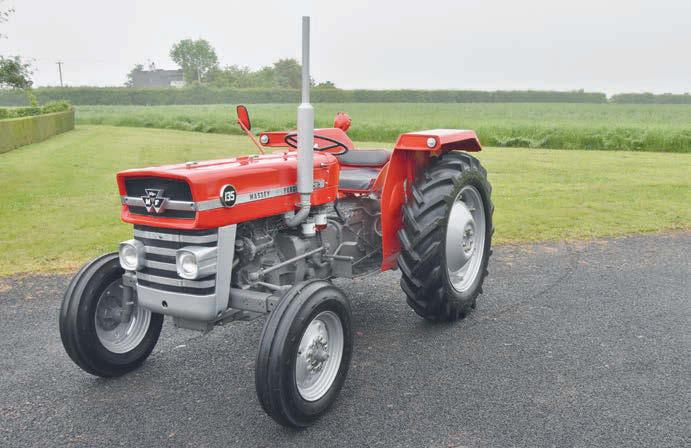
The MF135 was the best-selling Massey Ferguson tractor of all time, and with good reason. It had a fine heritage and epitomised all that was good about a small tractor in the 1960s and ‘70s.
The MF135 remains incredibly popular at shows and rallies all over the UK. This smart example was photographed parading in the ring at the 2021 Hellingly Festival of Transport, near Hailsham, in East Sussex.
